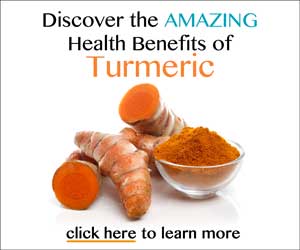Are Oat Grains and Oatmeal Cancer Fighting Foods?

Did You Know?
Oats have been cultivated as a crop since at least 2000 BC, according to archaeological records. Oats have been described to have medicinal properties by Hippocrates and other ancient Greek writers. (i.352)
Besides being used for animal feed, cereal products, and herbal medicine, oats are also used to make beer and whiskey and as a food preservative in bacon, nuts, and potato chips. (i.354, 355)
Eating whole grain foods is associated with lower risk for many diseases, including cancer. So it may be surprising to know that population studies show that higher levels of dietary oats and oatmeal are not linked to lower rates of certain types of cancer. However, research does suggest that many isolated compounds found in oats have cancer fighting effects. (i.348-351)
Beneficial Compounds in Oats
Oats are processed from cereal grasses. Cultivated oats include the species Avena sativa, Avena byzantina, and Avena nuda. The most commonly grown species of oats is A. sativa. (i.352-356)
Oats are loaded with a number of cancer-fighting antioxidant compounds. Some are specific to oats (e.g., avenathramides) and some are also found in other cereal grains, as well as vegetables and fruits. Studies show that these compounds may be beneficial in fighting various cancers:
Other beneficial compounds in oats include:
- Scopoletin (i.406)
- Tricin (from oat hulls) (i.407)
- Unsaturated fatty acids (i.379)
- Vanillic acid (i.357)
Many of these oat compounds have both antioxidant and anti-inflammatory properties. (i.355, 356, 408)
Other Potential Health Benefits of Oats
Topical oatmeal is commonly used to relieve symptoms of itch and irritation caused by skin rashes — including eczema. Research suggests dietary oats, oats oil, oatmeal, and oat compounds may have benefits in various conditions and chronic diseases. (i.349, 356, 409)
These include:
- Anxiety (i.356)
- Cognitive and memory loss (linked to aging) (i.405)
- Diabetes (i.353, 356)
- Erectile dysfunction (ED) (i.356)
- Fatty liver disease (i.410)
- Fungal infections (i.411)
- Heart disease (i.353)
- High blood pressure (mixed results) (i.412)
- High cholesterol (i.356)
- Male infertility (i.413)
- Obesity (i.414)
- Osteoporosis (i.415)
- Wound healing (i.416)
- Wrinkles (i.417)
Despite these positive research results, a recently published meta-analysis of 6 population studies showed no link between consumption of oats or oatmeal and: (i.350)
- Cancer
- Diabetes
- Disease-related mortality
- Heart disease
- Infectious diseases
- Respiratory diseases
This may be due to the species of oats used or the study type. In addition, how oat groats are processed affects the level of beneficial antioxidants in oats. (i.350, 353, 418)
Forms of Oats Available
Whole oat grains are called groats. Similar to other whole grains, groats contain bran, germ, and an endosperm.(i.69, 375)
The different kinds of oats found in the market depend on how the oat grains are processed:
| Oat Product | Description |
|---|---|
|
Groats (also called oat pearlings) |
|
| Rolled oats | |
|
Scotch oats (also called steel-cut oats or Irish oatmeal) |
|
|
Regular old fashioned oats (also called table-cut oats) |
|
|
Quick-cooking oats (also called instant oats) |
Whole oat groats have more antioxidants than oat flour. (i.375)
Oats and Gluten-Free Diets
Oats may be a useful grain for people following a gluten-free diet, including those with celiac disease. However, experts caution the following: (i.419, 420)
- A small percentage of people with celiac disease may still have a negative reaction to oats.
- Oats can be contaminated by other cereal grains that contain gluten, so a certified gluten-free source is important.
- Certain varieties of oats may be better than others at avoiding the immune-system response linked to celiac disease. Studies suggest Avena genziana and A. potenza are the best choices.


